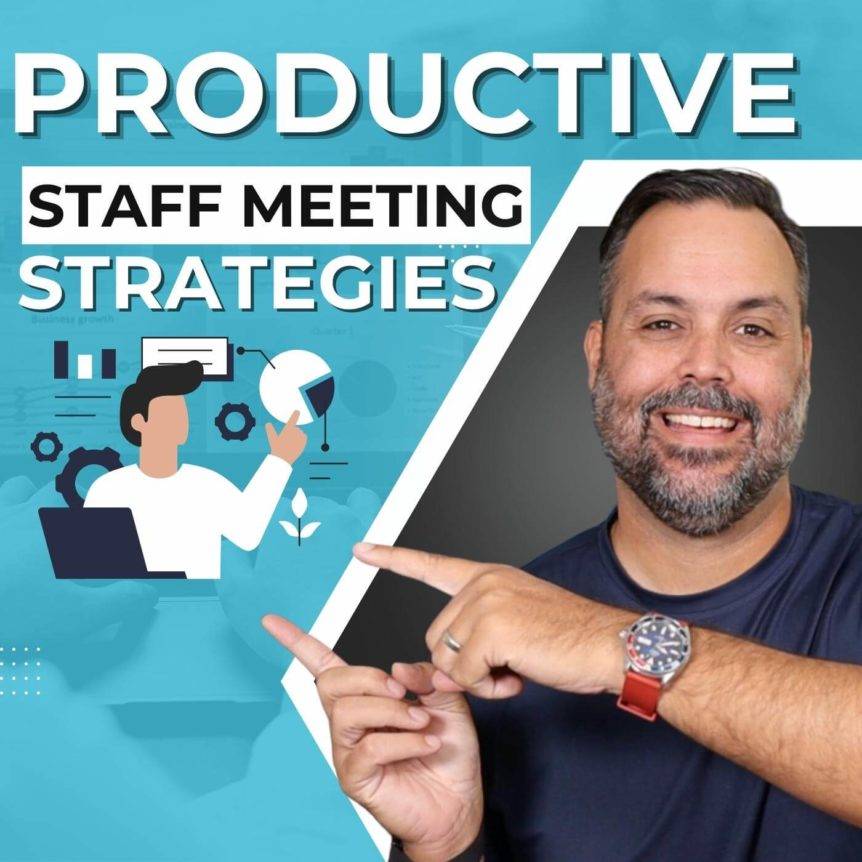You know the drill. You show up to your weekly church staff meeting, have lots of talking, and nothing gets done. Maybe some announcements are made and a few ideas are tossed around, but for the most part, it feels like a waste of time.
If this sounds familiar, you’re not alone. Most churches struggle to make their staff meetings productive and effective.
Still, with a little planning and knowledge, your church staff meetings can actually work for your team. Here are a few tips to help you make that happen.
Table of contents
Key Problems With Church Staff Meetings
Church staff meetings can quickly become ineffective and unproductive if certain key problems are not addressed.
Common issues include:
- Not establishing a clear purpose for the meeting
- Neglecting to provide an agenda ahead of time
- Going off on tangents and getting sidetracked
- Failing to assign actionable items with deadlines
- Not following up or holding people accountable
- Letting the meeting run too long
We’ve probably experienced all of these issues at some point. Unfortunately, some people find it easier to lead meetings and have endless discussions than to actually manage projects and work! And some team members simply don’t know better.
But when you have dysfunctional meetings and don’t honor your core values, participation and engagement will decrease.
Maybe you’ve never thought about it, but equipping your team with training and resources for effective meetings could be one of the most important things you do for your organization. Running a productive meeting isn’t always natural and intuitive.
5 Tips For Effective Church Staff Meetings
One of the great ironies for teams is that everyone says they need better communication…but putting more meetings on the calendar doesn’t help. You don’t just need MORE communication, you need the right kind of communication. Here’s how.
1. Define a clear purpose for your church staff meeting
What do you want to accomplish in the time you have together? Is the meeting to inform and update? Brainstorm? Make decisions? Plan upcoming events?
If everyone is sharing information, you could simply provide an email or written update. Meetings should be reserved for items that require interaction, discussion, and feedback.
Having a clear purpose for staff meetings should be the first step in organizing productive and effective discussions. Doing this will help to ensure that everyone on the team knows what is expected of them and how their attendance can benefit everyone. When defining a clear purpose for your church staff meeting, it’s important to consider what kind of discussion you want to have and what kind of decisions you are looking to make.

2. Set a clear agenda
When it comes to making decisions and driving progress, a properly planned discussion can be invaluable – that’s why it’s important to make a list of topics to be discussed ahead of time.
Walking into a room with a to-do list in your head isn’t enough. Instead, make sure you:
- Write out agenda items
- Send the agenda to participants in advance
- Assign leaders for each discussion point
- Assign a maximum amount of time to discuss each agenda item
Planning your agenda items helps you stay organized. And laying out agenda items allows people time to think, research, and prepare. This is important for internal processors and introverts who prefer alone time to think through strategy and new ideas.
With the right leader guiding each conversation and clear expectations going in, everyone can have confidence in the topic selections about what to discuss.
3. Make sure the right people are in the room
According to Harvard Business Review, the most productive meetings have 5-8 people. When too many people are in the room, the conversation will be too shallow, not everyone can participate, and people become more guarded.
Invite people who are essential to the conversation and responsible for the outcome.
On another note, if the purpose of your meeting is to develop a plan, you need to have the right decision-makers in the room or get their blessing ahead of time. Otherwise, your meeting can end up being a complete waste of time.
For example, say you’re having an Easter meeting. Part of your discussion is about the guest experience and activities you’d like to have pre-service, and the other is about the service flow itself. You need to make sure your Facilities, Guest Experience, and Creative leaders (and in some churches the senior pastors) have approved of the general concepts before you hash out the details.
We can’t tell you how often we’ve seen this! Staff members can end up investing tons of time in meetings about things that never even happen because church leaders and key decision-makers in the organization weren’t involved soon enough.
4. Keep your meetings on time and short
Great church staff meetings start and end on time. And they’re shorter than you think. We know that’s easier said than done. Especially when your team meeting is full of ministry folks who are super relational.
But here’s the thing–staff meetings aren’t necessarily the best space for team building and fellowship. Healthy teams need the opportunity to build relationships and have friendly banter…but do it outside of the actual meeting time. When every meeting starts with chit-chat, people will arrive late and tune out for the beginning…then it’s harder to get them fully engaged.
Here are some things to think about for your next meeting:
- You may want to assign a person who isn’t leading the conversation to watch the clock and even set a timer. It’s their responsibility to give a time warning and everyone moving forward to cover all agenda items.
- If discussions are getting off track, lead people back to the purpose of the meeting and note what type of follow-up is needed.
- Stick to a 25-minute timeframe whenever possible.
A 25-minute meeting may not sound long enough every single time but, according to an article in Fast Company, many experts say this is the sweet spot. The Pomodoro method suggests 25 minutes is the optimal amount of time to focus.
Also, Parkinson’s Law states that work expands to fill the time allotted. If you think back on staff meetings with your business, ministry, or organization then you’ll surely realize this is true.

5. Set action steps and follow up
Effective church staff meetings should end with clear action items for everyone directly involved. A key phrase to remember when crafting action items is:
WHO does WHAT by WHEN?
This means your next steps should be assigned and communicated to the right participants, be specific, and have a clear deadline. In sum, these action steps should help move your plan and project forward before the next meeting occurs.
An example would be: Mike will research vendors and get three quotes before our meeting next week. With this action step completed, a clear decision can be made the following week without having to wait on additional info.
Church leaders should also avoid the “meeting after the meeting” when possible. Endless discussions can bog down the organization, complicate communication, and stall progress.
Behind the Scenes of a Great Church Staff Meeting
Your church staff meetings serve a vital purpose. They help you
- Ensure everyone is on the same page
- Reinforce core values and mission
- Build team camaraderie
- Help develop future strategy
- Provide focus for your ministry or church
- Help your team communicate
- Celebrate wins!
But church meetings often miss the mark by trying to do all these things every time. Remember the helpful principle: less is more. When your meeting is specific and team leaders are well prepared, staff and volunteers will actually look forward to meetings.
Having productive, engaging staff meetings doesn’t have to be a pipe dream. By following the tips above, you can turn your boring staff meeting into an opportunity for growth and productivity. Your team will thank you for it! Let us know your biggest struggle when it comes to church staff meetings in the comments below. We’re here to help!




